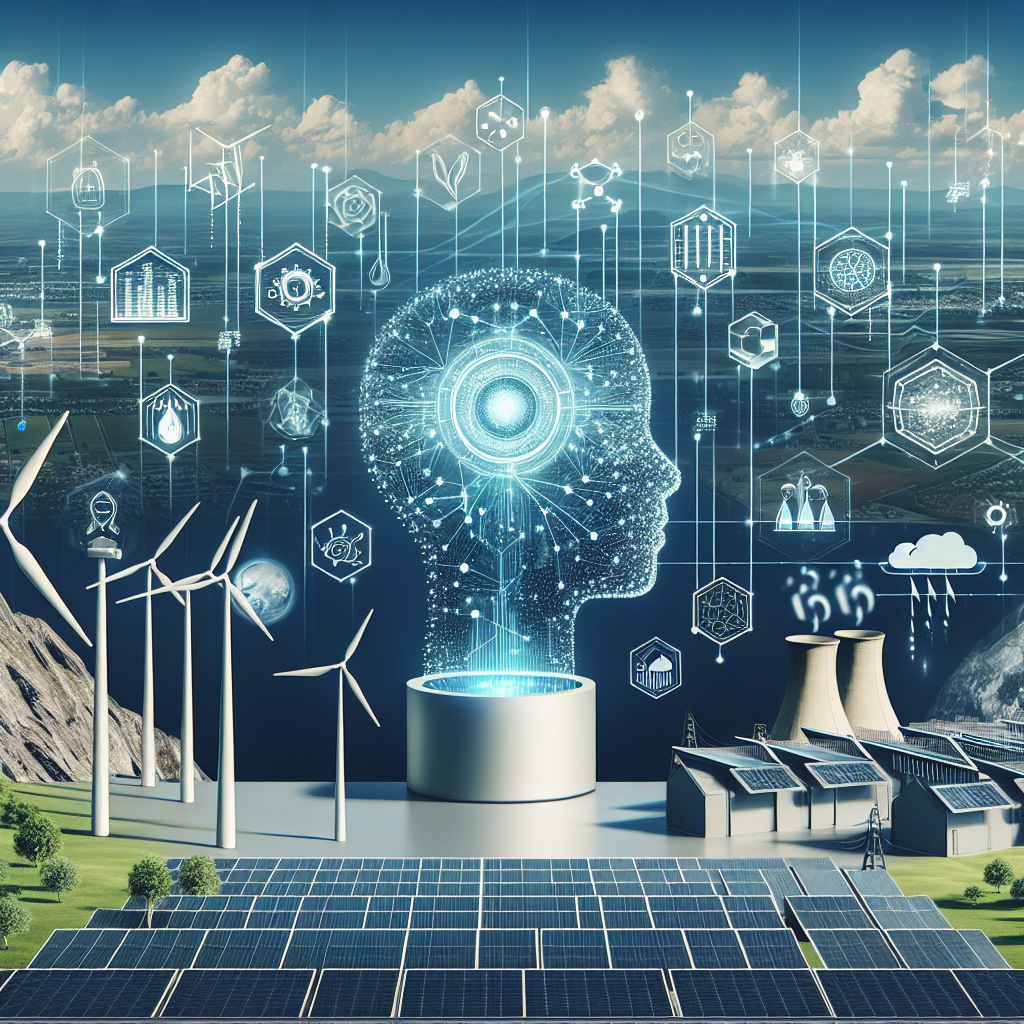In recent years, the integration of renewable energy sources such as solar and wind power into the electricity grid has been increasing rapidly. These sources of energy are clean and sustainable, but their intermittent nature poses a challenge for grid operators in accurately forecasting their output. This is where artificial intelligence (AI) strategies come into play, offering solutions to improve the accuracy of renewable energy forecasting.
AI technologies, such as machine learning and neural networks, have shown great potential in optimizing the forecasting of renewable energy generation. By analyzing historical data and real-time weather conditions, AI algorithms can predict the output of solar panels and wind turbines with a higher degree of accuracy than traditional forecasting methods. This not only helps grid operators better manage the variability of renewable energy sources but also enables them to make more informed decisions on energy production and distribution.
One of the key advantages of AI strategies for improving renewable energy forecasting is their ability to adapt to changing conditions in real time. Traditional forecasting models often rely on static assumptions and may not be able to account for sudden changes in weather patterns or equipment malfunctions. AI algorithms, on the other hand, can continuously learn from new data and adjust their predictions accordingly, providing more reliable forecasts even in dynamic environments.
Furthermore, AI strategies can also help optimize the operation of renewable energy systems by identifying patterns and trends in energy production. By analyzing historical data and performance metrics, AI algorithms can suggest ways to improve the efficiency of solar panels and wind turbines, leading to higher energy yields and cost savings for operators.
Overall, the use of AI strategies for improving renewable energy forecasting holds great promise in advancing the transition to a more sustainable energy system. By harnessing the power of machine learning and neural networks, grid operators can better manage the variability of renewable energy sources and maximize their potential for clean energy production.
FAQs:
1. How does AI improve renewable energy forecasting?
AI technologies such as machine learning and neural networks analyze historical data and real-time weather conditions to predict the output of solar and wind energy sources with higher accuracy. This helps grid operators better manage the variability of renewable energy sources and make more informed decisions on energy production and distribution.
2. What are the advantages of using AI for renewable energy forecasting?
AI strategies can adapt to changing conditions in real time, provide more reliable forecasts in dynamic environments, and optimize the operation of renewable energy systems by identifying patterns and trends in energy production. This leads to higher energy yields, cost savings, and a more efficient energy system overall.
3. How can grid operators implement AI strategies for renewable energy forecasting?
Grid operators can work with AI developers and data scientists to build and deploy AI algorithms that analyze historical data, real-time weather conditions, and performance metrics of renewable energy systems. By integrating AI technologies into their forecasting models, grid operators can improve the accuracy and reliability of renewable energy forecasts.
4. What are some challenges in implementing AI strategies for renewable energy forecasting?
Some challenges in implementing AI strategies for renewable energy forecasting include the availability of high-quality data, the complexity of AI algorithms, and the need for specialized expertise in machine learning and neural networks. Grid operators may also face resistance to change from stakeholders and regulatory barriers in adopting AI technologies.
5. What is the future outlook for AI in renewable energy forecasting?
The future outlook for AI in renewable energy forecasting is promising, with ongoing advancements in machine learning, neural networks, and data analytics. As AI technologies continue to evolve, grid operators can expect more accurate and reliable forecasts of renewable energy generation, leading to a more sustainable and efficient energy system.

